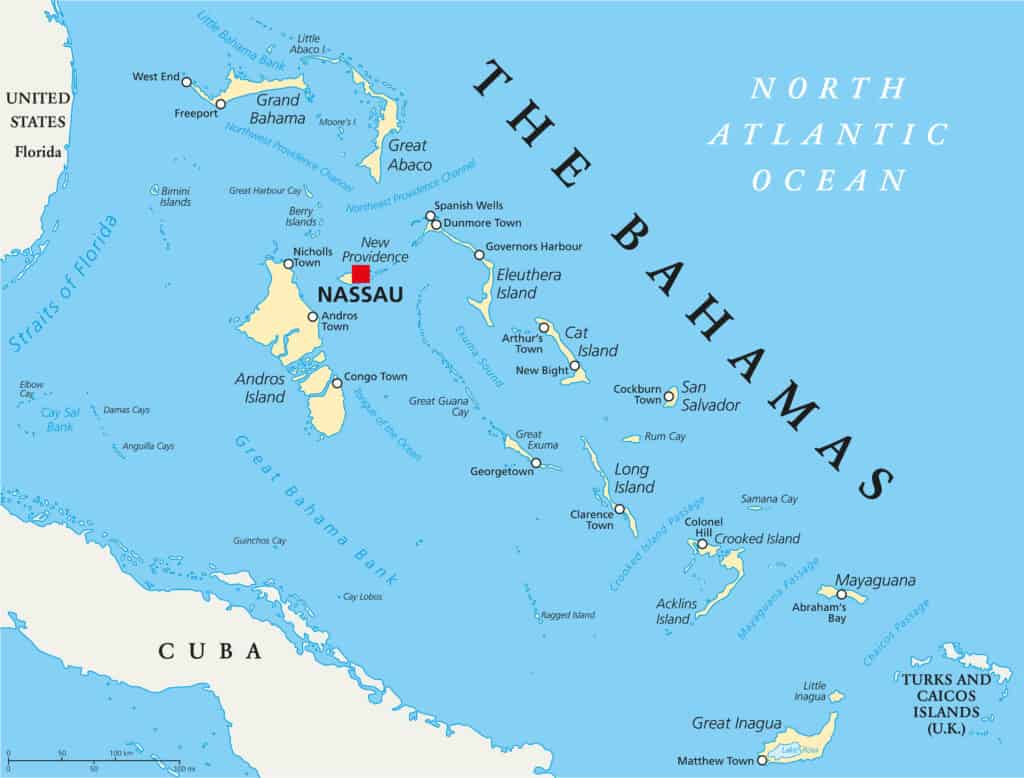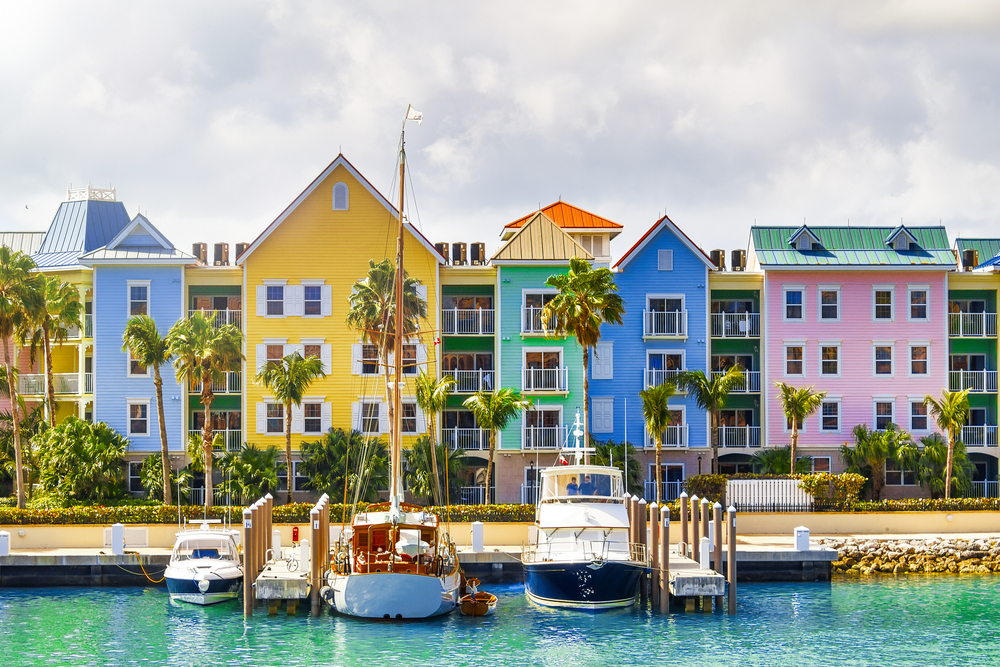
The Bahamas is an archipelagic state with over 3,000 islands located in the Atlantic ocean. It is the third richest country in the Americas with an economy based on tourism and offshore finance. What is the capital of the Bahamas?
Nassau is the capital of the Bahamas. It has a population of over 274,400 people and it serves as the center of education, law, commerce, administration, and media for the country. It was founded in 1670 by British noblemen who named it Charles Town.
Learn all about the history, geography, climate, and development of the Bahamas’ capital below.

About Nassau

Nassau is the capital of the Bahamas and is home to over 274,400 people. This makes up 70 percent of the entire people residing in the Bahamas. It serves as the center of education, law, commerce, administration, and the media for the country. Located in New Providence, Nassau’s airport Lynden Pindling International Airport has flights to Canada, The US, The Caribbean, and The United Kingdom.
Nassau was named after William III of England, Prince of Orange-Nassau. Nassau’s growth started late in the eighth century when the Loyalists fled with their slaves to Nassau following the Revolutionary War. Many settled in the Bahamas and grew large enough to overcome the population of residents of the island. The city now encompasses the island and its neighbor Paradise Island.
History

Nassau was founded in 1670 by British noblemen and British settlers to the island. They constructed a fort which they named Charles Town, after England’s King Charles II. The island was used initially as a fort against the frequent wars with the Spanish. After it was burned down during a raid in 1684, Governor Nicholas Trott rebuilt and renamed the town Nassau.
The name Nassau is taken from a town in Germany with the same name.
After Governor Trott, Nassau was occupied by the Spanish and French allied forces. By 1713 the Governor of Bermuda declared there were over 1,000 pirates in Nassau which was known as New Providence. Nassau’s harbor was ideal for defense and holds over 500 ships, but is too shallow to accept battleships. Many pirates used Nassau as a home base including Edward Teach, also known as Blackbeard.
Captain Woodes Rogers became the governor in 1718 and sought to regain control of the island. He successfully rebuilt the fort and resisted the Spanish attack in 1720. During the Revolutionary War Nassau was undergoing an economic boom. In 1776, during the Raid of Nassau, the Marines captured the military supplies from the island. In 1778, Nassau was raided again by Captain Rathburn and held for two weeks.
The Spanish captured Nassau again for the last time in 1782. Andre Deveaux, an American loyalist, recaptured the island with 220 men and 150 muskets over 600 soldiers. Lord Dunmore was the governor from 1787 to 1796 and constructed Fort Charlotte and Fort Fincastle. During the Civil War, Nassau was a port for blockade runners that continued to trade with the Confederacy.
After the Cuban Revolution of 1959, tourism to the island grew due to the restrictions on Americans visiting Cuba. It remains a popular common tourist destination today.
Geography
Nassau’s harbor has a blend of old-world and colonial architecture. Directly behind the port area, New Providence has 200 km of flat land with low ridges. In the center of the island, there are shallow lakes that are connected to oceans.
Nassau resides 181 miles from the coast of Miami, FL. The Atlantis resort on the nearby Paradise Island accounts for most of the tourism on the island and employs over 6,000 Bahamians
Climate
Nassau is considered a tropical savanna climate. It has wet hot summers and dry mild winters. The temperature stays consistent during the year and can range from a low of 77°F during the winter to a high of 90°F in the summer. The temperature rarely falls below 59°F.
Development
Since the 19th century, Nassau has become urbanized. The 1788 developed part of Nassau was just a few blocks of buildings and became the main residential area. Until 30 years ago this was the most popular part of the city. In the 20th century, the city spread to the east and remained the main settlement until the Second World War.
Recent developments have been quite different. It consists mainly of planned subdivisions. Since the 1960’s the government has also sponsored low-income housing as well.
Landmarks
City Center
The city center is the center of all the activities in Nassau. It contains the dining, shopping, and sightseeing of the city. The busiest part of the city is Bay Street. The British Colonial Hotel is located on Bay Street. The Pirates of Nassau Museum is just across the street from the hotel.
Other landmarks found in the city center include Vendue house, Nassau Public Library, and Christ Church Cathedral.
Another popular tourist destination The Straw market was opened in 2011 after the Fish, Vegetable, and Straw market was burnt down in 2001.
Cable Beach
The hotel district of Nassau is Cable Beach. It houses five hotels as well as most of the restaurants in the area. In 2017, the Baha Mar resort and casino opened with more than 2,000 rooms and the largest gaming facility available in the Bahamas.
Junkanoo
Junkanoo, a colorful street parade, takes place between December 26th and January 1st. At the end of the Junkanoo judges award prizes for the best costumes, music, and presentation. Contestants can spend the entire year preparing their costumes for the festival.
Conclusion
Nassau, the capital of the Bahamas, was founded in 1670 and today holds over 70 percent of the population of the Bahamas. It houses education, commerce, law, and media for the country. Nassau’s growth started in the eighth century when Loyalists and their slaves fled there after the Revolutionary War.
After the restrictions on Americans visiting Cuba in 1959, Nassau experienced a growth in tourism that continues to grow still.
